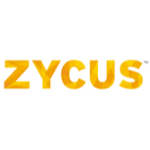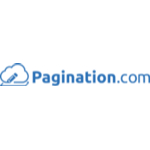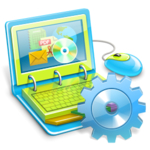List of Best Catalog Management Software
Showing 10 of 39 productsSalsify is a software that is transforming the way businesses manage and optimize their product information. With its user-friendly interface features, Salsify streamlines the process of creating, organizing, and distributing product data across all...Read Salsify Reviews
GEP Smart is a all-in-one procurement software designed to streamline your sourcing, procurement, and supply chain management processes. With its intuitive user interface features, GEP Smart empowers organizations to drive efficiency, reduce costs, a...Read GEP Smart Reviews
Zycus e-Procurement is a software that streamlines the entire procurement process for businesses of all sizes. With its user-friendly interface features, Zycus e-Procurement allows companies to efficiently manage and track their purchasing activities...Read Zycus e-Procurement Reviews
Akeneo PIM is a and versatile product information management system designed to streamline the creation, management, and enrichment of product data. So whether youre a small startup or a large enterprise, Akeneo PIM is the solution to revolutionize y...Read Akeneo PIM Reviews
Coupa is a leading cloud-based spend management platform that helps organizations effectively manage their expenses, improve efficiency and drive business growth. With its user-friendly interface and powerful features, Coupa streamlines procurement,...Read Coupa Reviews
Pagination is a solution for efficient organization and navigation of online content. With its user-friendly interface features, it simplifies the process of dividing and displaying large amounts of information into manageable pages. Say goodbye to e...Read Pagination Reviews
MyBusinessCatalog, a revolutionary software designed to streamline the process of creating, organizing, and delivering professional business catalogs. With user-friendly features and customizable templates, MyBusinessCatalog simplifies the catalog cr...Read MyBusinessCatalog Reviews
BetterCommerce is a e-commerce platform that is transforming the way businesses operate in the digital world. With its user-friendly interface features, this software is designed to streamline online transactions and enhance customer experiences. Fro...Read BetterCommerce Reviews
B2B Wave is an innovative software for companies looking to streamline their business-to-business operations. With its user-friendly interface features, B2B Wave makes managing orders, inventory, and customer relationships effortless. Say goodbye to...Read B2B Wave Reviews
FlippingBook is an innovative digital publishing platform that transforms your static PDFs into engaging, interactive online flipbooks. With its user-friendly interface features, FlippingBook revolutionizes the way you share your content and captivat...Read FlippingBook Reviews
- What Is Catalog Management Software?
- Top Reasons Why Businesses Need Catalog Management Software?
- What Are the Top Key Features of Catalog Management Software?
- What Are the Top Benefits of Catalog Management Software?
- What Are the Steps to Choose the Right Catalog Management Software?
- What Are the Types of Catalog Management Software for Different Industries?
- What Are the Technology Trends for Best Catalog Management Software?
- What Are the Deployment Options for Catalog Management Software?
What Is Catalog Management Software?
Catalog management software is a software application utilized for the purpose of effectively managing product information in a manner that facilitates convenient access, efficient updating, and seamless maintenance of a collection of products. The program functions as a centralized repository for the comprehensive collection of product data and information.
This practice aids in guaranteeing the accuracy and consistency of product data. The catalog management system additionally enables organizations to conveniently generate, modify, and oversee digital catalogs and product descriptions. Through the utilization of this software, organizations have the ability to efficiently improve their digital product portfolio.
Furthermore, the utilization of the best catalog management software facilitates the process of optimizing and automating the updating of product price and information for organizations. This practice aids in enhancing precision and mitigating human fallibility during the process of updating items and information.
Additionally, the utilization of online catalog management software aids in the reduction of both time and financial resources expended by organizations during the process of updating product information. Ultimately, the utilization of this software effectively mitigates the necessity for manual information updates, hence potentially yielding significant time savings for enterprises.
In general, the utilization of catalogue management tools is a highly advantageous resource for firms, as it enables them to effectively administer their range of products. The software in question optimizes the efficiency of product management activities and guarantees the accuracy and timeliness of product data, pricing, and descriptions.
Top Reasons Why Businesses Need Catalog Management Software?
1. Streamlined product management: The best catalog management software simplifies the process of arranging, storing, and monitoring product information, encompassing photos, pricing details, and product descriptions.
2. Improved search capabilities: Catalog software facilitates efficient product search and filtering, hence enhancing convenience for customers and enabling businesses to streamline their operations.
3. Automated product feeds: The utilization of catalog management tools facilitates the generation of product feeds, which in turn enables online retailers to efficiently and precisely exhibit comprehensive product information across various platforms.
4. Advanced categorization: Catalog management system is a tool utilized by organizations to provide precise and comprehensive product classifications, hence enhancing the shopping experience for clients through improved organization.
5. Optimized performance: The implementation of online catalog management software can enhance performance and accuracy by eliminating manual operations involved in product data management.
6. Easy product updates: Catalogue management tools streamlines the process of product updates, facilitating the efficient modification of product descriptions, pricing, availability, and related information in a prompt manner.
7. Customizable product landing pages: Catalog management system enables organizations to create personalized product landing pages in order to enhance user experience and foster consumer engagement.
8. Accurate customer segmentation: Catalog software is a valuable tool that enables firms to effectively segment client databases, hence facilitating targeted marketing efforts towards certain customer groups.
9. Reduced manual errors: The utilization of catalog management tools significantly mitigates the occurrence of human errors that are often connected with manual data entry and product changes.
10. Increased team productivity: Catalog management software enables teams to allocate less time towards the management of product data, therefore allowing them to dedicate more time and attention towards other responsibilities.
11. Better organizational controls: Catalog management system offers enterprises the capability to impose limitations on user access to specific catalogs or goods.
12. Cost savings: Catalog management tools is a technological solution that mitigates the need for extensive manual labor in the process of managing product information, hence resulting in cost savings for organizations.
13. Improved customer service: The provision of precise and current product information to customers has the potential to enhance customer happiness and foster customer loyalty for organizations.
14. Increased sales: The utilization of the best catalog management software enables organizations to enhance the precision of client behavior tracking and analysis, hence leading to a boost in sales.
15. Enhanced analytics: Catalog software has the capability to provide comprehensive reports and analytics, hence facilitating organizations in gaining a deeper understanding of client behavior.
What Are the Top Key Features of Catalog Management Software?
The top features of catalog management software include:
• Automation of product information & organizational data: The implementation of automated systems for product information and organizational data enables organizations to efficiently retrieve, oversee, enhance, and disseminate data from a singular centralized repository.
• Customizable templates: Catalog management system enables organizations to develop and tailor templates that align with their corporate identity and product portfolio, hence facilitating a more efficient and simplified catalog creation process.
• Multi-channel integration: Online catalog management software enables enterprises to efficiently disseminate product information across many channels and platforms, including online marketplaces and brick-and-mortar stores, thereby assuring a uniform customer experience irrespective of the purchasing location.
• E-commerce focused: E-commerce catalog management tools equipped with integrated search and catalog filtering functionalities enable clients to efficiently locate the precise product they desire.
• Security and privacy controls: Online catalog management software enables organizations to customize access control and implement privacy measures at the data level in order to safeguard sensitive information and data.
• AI-driven insights: The utilization of artificial intelligence (AI) in catalog management software enables the provision of intelligent analyses pertaining to client purchasing patterns, customer segmentation, optimal product positioning, and additional relevant factors.
• Analytics and reporting: Analytics and reporting solutions provide organizations with comprehensive insights into their product information, enabling them to make well-informed decisions aimed at optimizing the success of their catalog.
What Are the Top Benefits of Catalog Management Software?
1. Streamlined Processes: The best catalog management software is a tool that enhances the efficiency of product catalogs by facilitating the streamlined management of products and providing rapid accessibility to them.
2. Automated Product Updates: The utilization of catalog management system enables the automatic updating of product information, so ensuring that clients are provided with the most current and accurate details pertaining to the items.
3. Improved Efficiency: The automation of procedures results in time savings and the elimination of human mistake, hence enhancing overall efficiency.
4. Enhanced Accuracy: The implementation of automated systems for product catalogs decreases the likelihood of incorporating inaccurate information and mitigates the occurrence of manual errors.
5. Improved Visibility: Develop an enhanced comprehensive compilation of product information, facilitating clients in efficiently locating their desired items.
6. Digital Catalogs: Developing digital iterations of product catalogs that may be readily shared and accessed through web platforms.
7. Easier Integration: The integration of catalogs with back-end systems and other applications is a strategic approach aimed at optimizing operational efficiency.
8. Customization: The online catalog management software can be configured according to individual requirements, allowing for effortless customization of corporate operations.
9. Scalability: Catalog management tools enable businesses to efficiently adjust their operations to meet their specific requirements, allowing for seamless scalability in both expansion and contraction.
10. Cost Savings: The implementation of automation in various processes has the potential to yield significant time and cost savings for enterprises, hence enabling the allocation of resources to alternative areas within the organization.
What Are the Steps to Choose the Right Catalog Management Software?
1. Identify your unique business needs: Determine the requirements of your enterprise with regards to catalog management.
When determining the appropriate size for a given context, it is important to take into account various factors, including but not limited to the desired level of multi-language support, localization capabilities, and the extent to which customization is desired.
2. Research available software: Conduct a comprehensive investigation of the existing market offerings for catalog management solutions, encompassing both paid and free alternatives.
This endeavor aims to acquire a comprehensive comprehension of the diverse array of options accessible, as well as to ascertain the distinct features and functionalities offered by each solution.
Additionally, it is advisable to conduct research on reviews and ratings pertaining to the software in order to have a comprehensive idea of its overall quality.
3. Create a list of requirements: Please compile a comprehensive inventory of desired attributes and components for the software.
This comprehensive list should encompass several essential features, including but not limited to on-the-fly product configuration, inventory tracking, pricing tiers, order and shipment management, customer and supplier management, web shop integration, as well as product enhancement tools, among others.
4. Compare solutions and select the best: Conduct a comparative analysis of the software options listed and those explored in step two, subsequently refining the list to retain only the most optimal solutions.
5. Demo the software: Prior to finalizing a purchase, it is advisable to engage in a software demonstration. This will facilitate comprehension of the user interface, experimentation with functionality, and practical utilization of the product.
6. Contact customer support: Please initiate communication with the customer service department of the potential catalog management system provider in order to inquire about various aspects of the program, such as its features, implementation process, and upgrade options, among others.
7. Make a purchase: Once a thorough comparison and demonstration of various catalog management software options has been conducted, it is imperative to make a well-informed decision regarding the program that most effectively caters to your specific requirements.
If feasible, the best catalog management software is advisable to conduct several meetings with the team before reaching a final determination regarding the purchase.
What Are the Types of Catalog Management Software for Different Industries?
There are several types of catalog management software available to different industries, each of which has their own unique advantages. The most common types of software used in catalog management are:
1. Asset Management Software: This particular program is employed inside many industries such as manufacturing, retail, and services to effectively oversee and monitor both tangible and intangible assets.
This particular software enables users to effectively monitor the performance of assets, oversee inventory levels, and seamlessly interface with various software applications, including those related to financial management, accounting, and customer relationship management.
2. Inventory Management Software: The catalog management system is predominantly utilized within the retail and warehousing sectors to effectively monitor and manage all data pertaining to stock inventory. This system facilitates the management of stock items, monitoring inventory in transit, and making predictions on future stock levels.
3. Product Data Management Software: The catalog management tools are employed for the purpose of effectively overseeing and organizing all pertinent information pertaining to products, encompassing specifications, descriptions, photos, and pricing.
This software solution facilitates the standardization of product information, hence providing uniformity in product data across various systems and platforms.
4. Configuration Management Software: The catalogue management tools are employed for the purpose of effectively overseeing the configuration and version control of various products or services. This software aids in the management of product configurations, ensuring compatibility between versions, and facilitating cost-effective product upgrades.
5. eCommerce Management Software: This particular software is specifically engineered to facilitate the management of eCommerce workflows and operations. This software application facilitates the management of sales orders, promotions, digital assets, and customer data.
What Are the Technology Trends for Best Catalog Management Software?
The technology trends in catalog management software are constantly evolving.
Some of these trends include:
1. Automation: Automated catalog management solutions play a crucial role in minimizing the time and effort expended in product data management and ensuring the currency of catalogs.
Incorporating functionalities such as automated inventory tracking, automatic product updates, automated order tracking, and predictive ordering can contribute to enhancing operational efficiency and precision.
2. Flexible Data Structures: Contemporary catalog management systems ought to provide adaptable data architectures. The functionality of these systems should facilitate users in conveniently altering the structure of product information, as well as the categorization of data, to ensure its adaptability for diverse applications.
3. Cross-platform Expoitation: It is imperative to ensure that users has the capability to access and effectively administer catalogs across diverse platforms. Catalog management systems that are compatible with mobile devices should provide users with a user-friendly interface that can be accessed across many devices.
4. Real-time Updating: It is imperative for catalog management systems to provide real-time updates to ensure that any modifications made in one component of the system are promptly and accurately reflected across all other components.
This practice aids in enhancing precision and guaranteeing the currency of product information consistently.
5. Highly Customizable: The customization of catalog management systems is crucial to enable users to adapt the software according to their individual requirements.
The incorporation of several functionalities, including product customisation, product sorting, and user-defined tags, can significantly enhance the efficacy of a catalog management system, enabling users to optimize their experience and maximize the system's potential.
What Are the Deployment Options for Catalog Management Software?
The deployment choices for catalog management software exhibit variability contingent upon the specific characteristics and scale of the business. Cloud-based software is widely adopted by small enterprises and organizations as it offers a cost-effective and easily maintainable deployment alternative.
Cloud-based software enables small businesses to remotely access their catalogs via the internet, eliminating the necessity of installing and maintaining a local server. The cloud-based alternative also provides scalability, allowing businesses to effortlessly incorporate more users and services as needed.
In the case of larger firms that possess intricate data requirements, opting for an on-premise implementation of the program is frequently deemed the most advantageous choice. This enables the firm to exercise comprehensive management over their catalog, uphold and augment its security measures, and get heightened flexibility through customisation options.
Nevertheless, the implementation of catalog management software on-premise necessitates a substantial initial financial outlay and perhaps necessitates supplementary IT assistance for the purposes of installation and upkeep.










